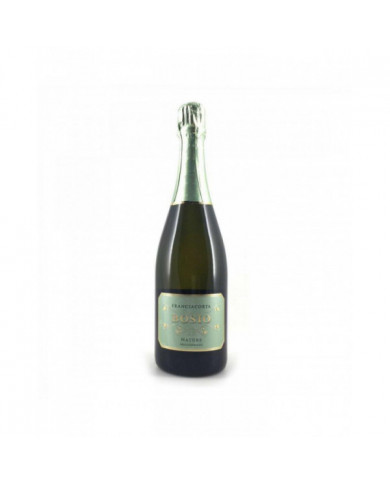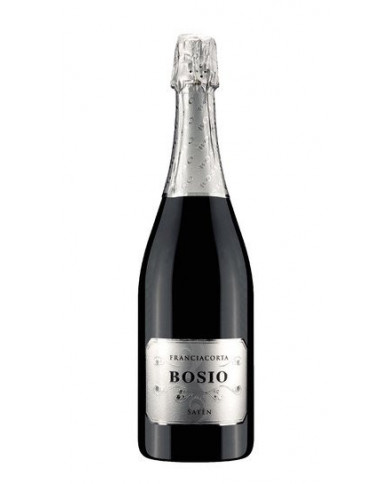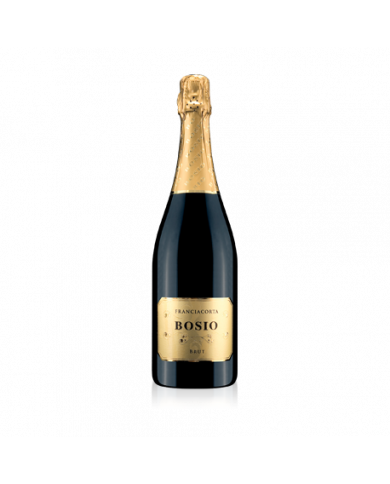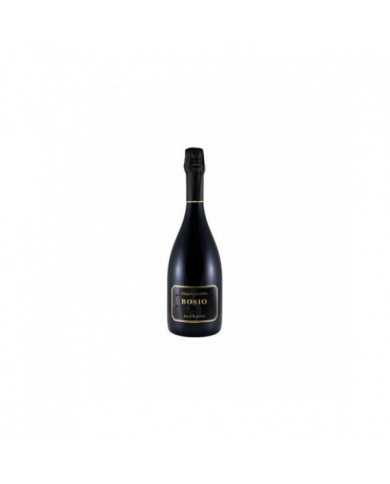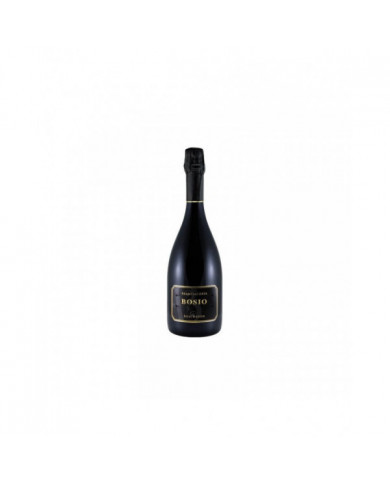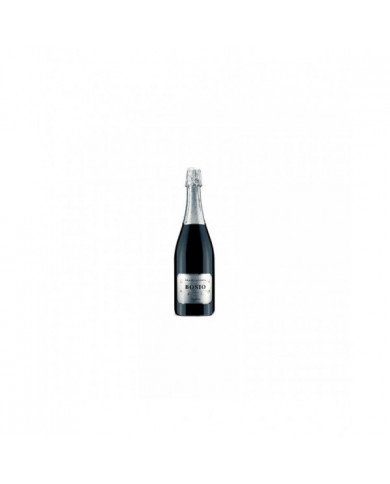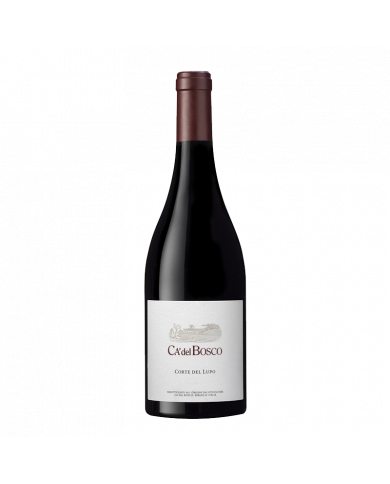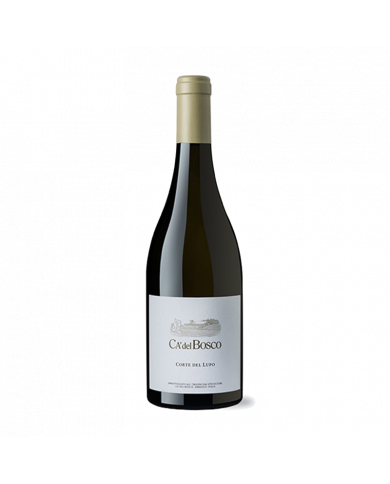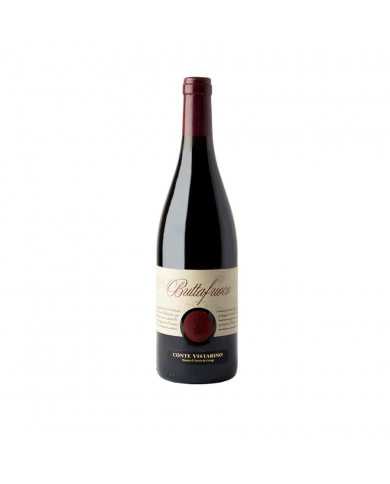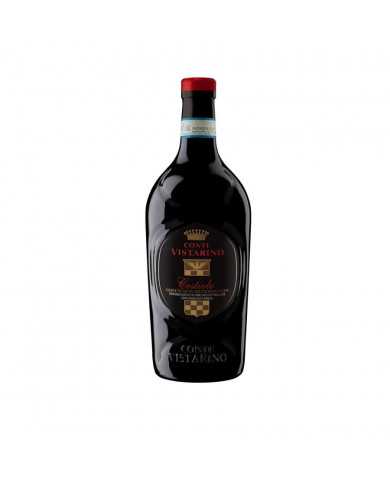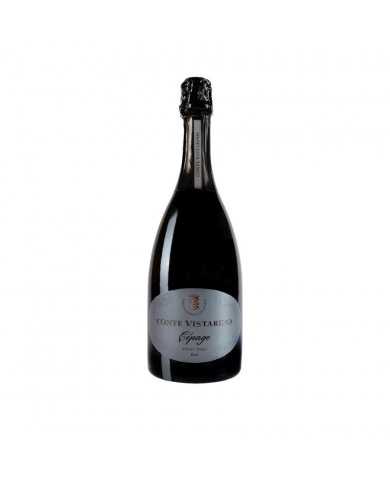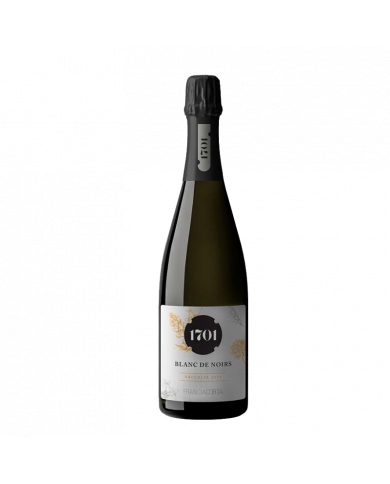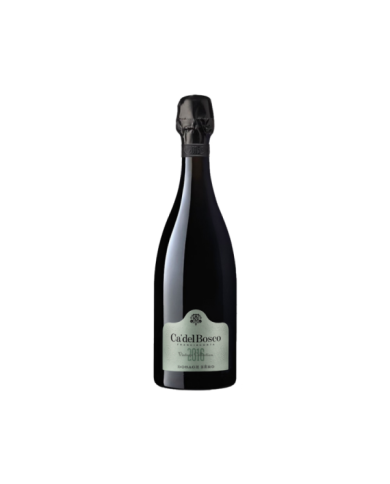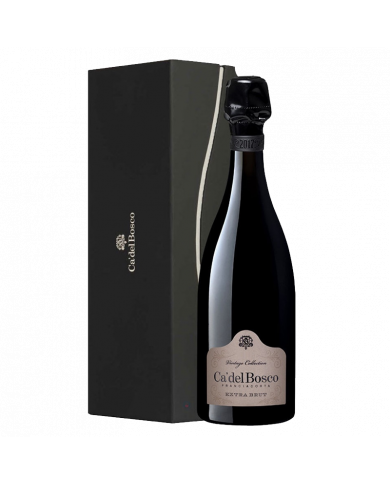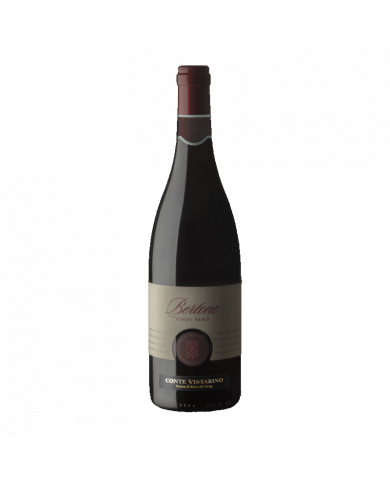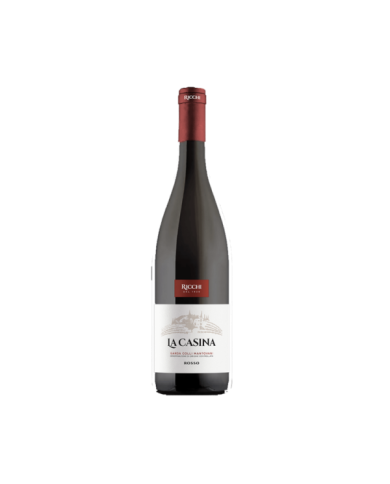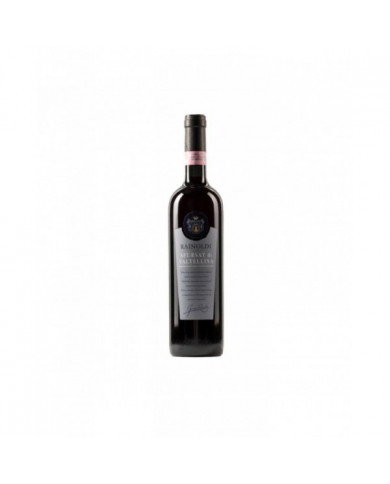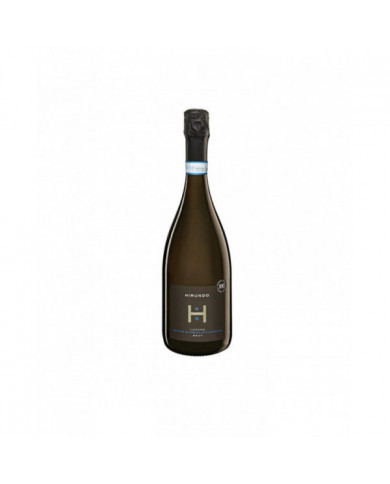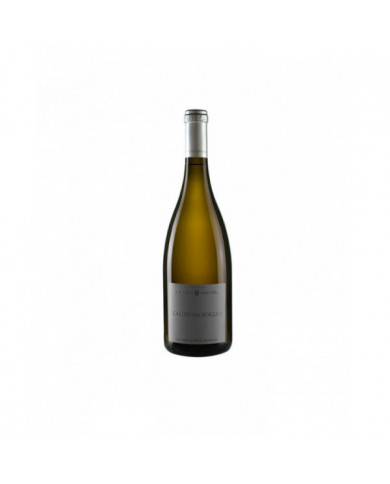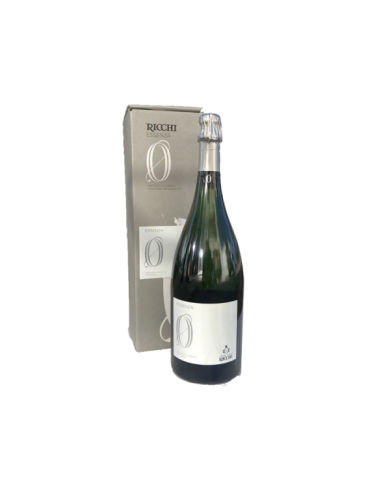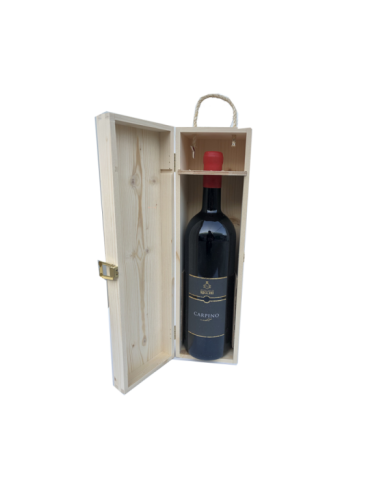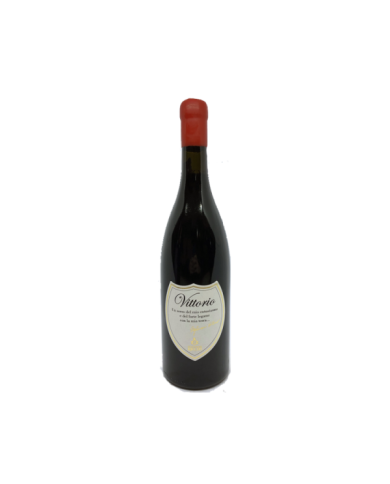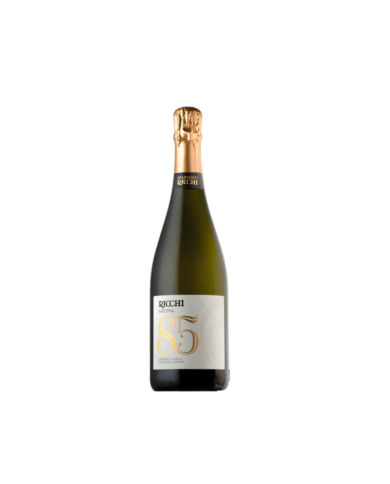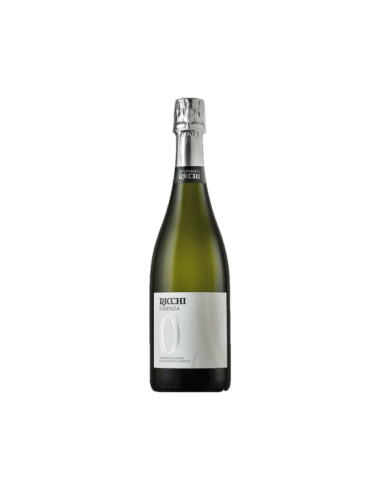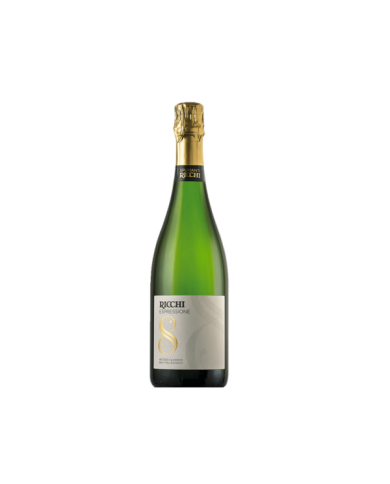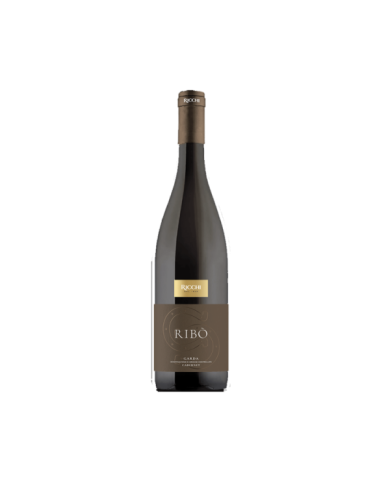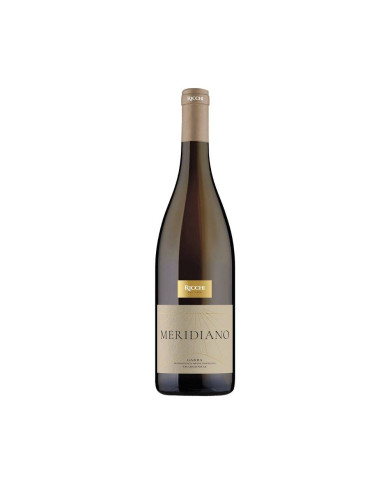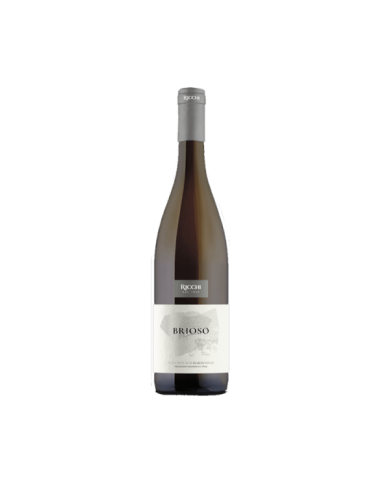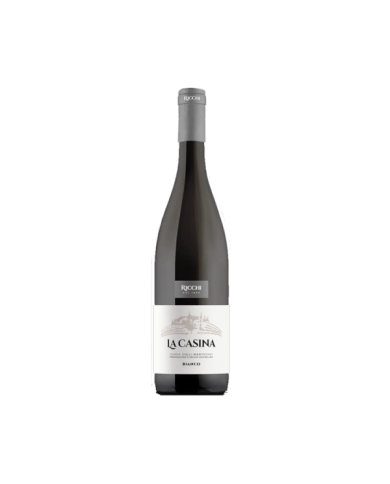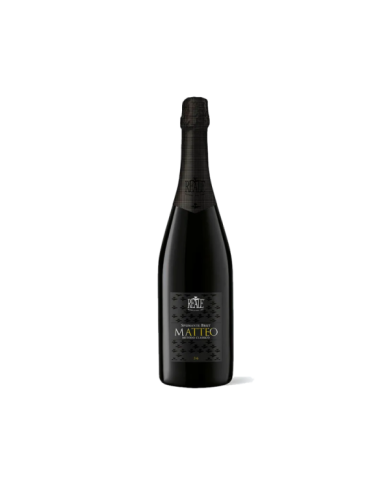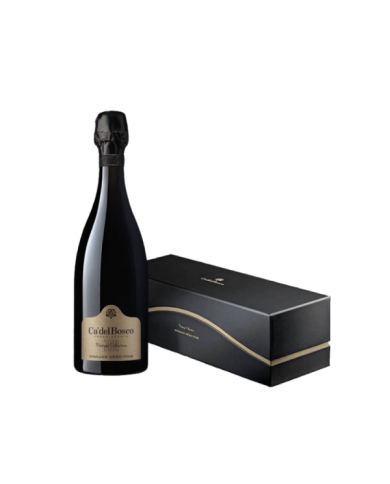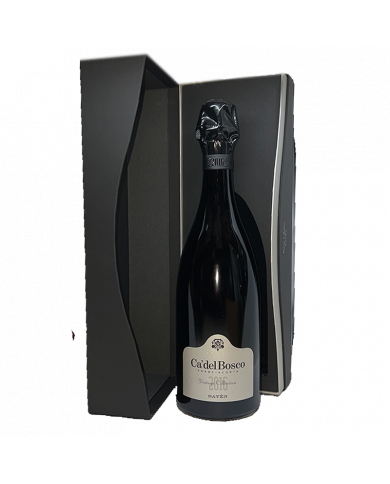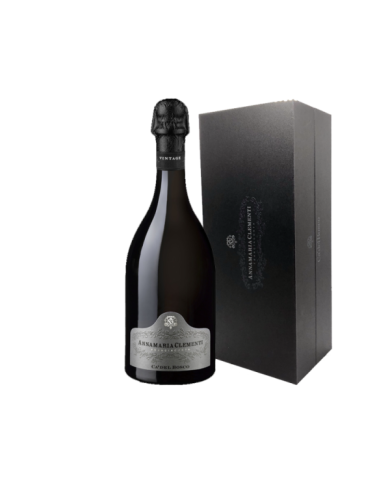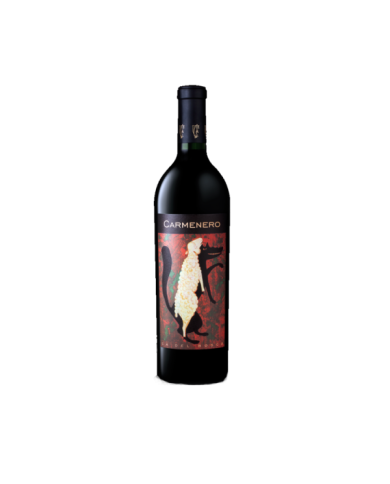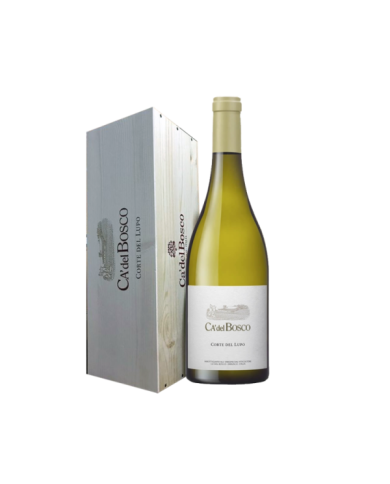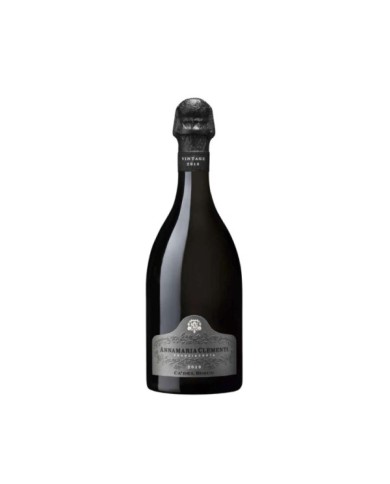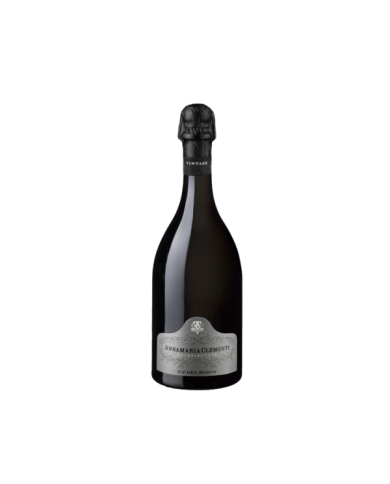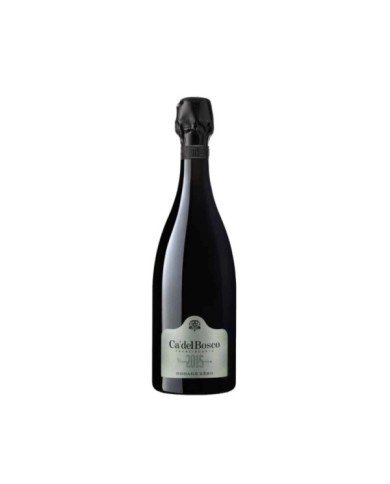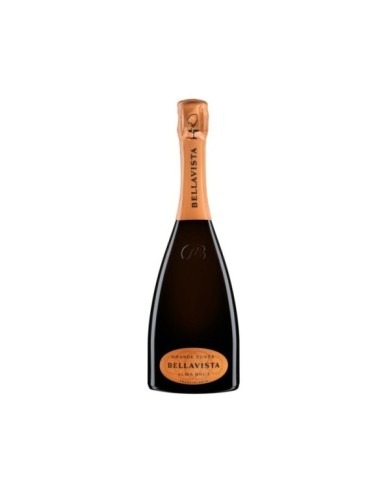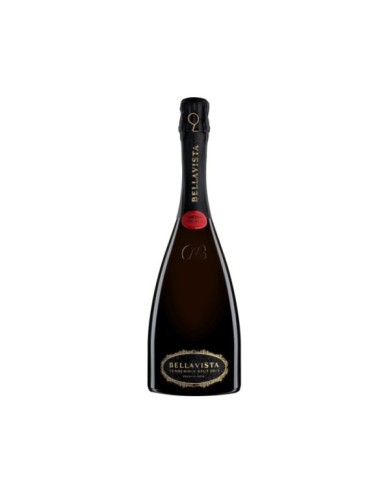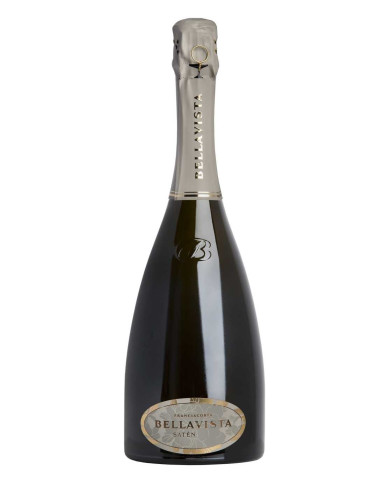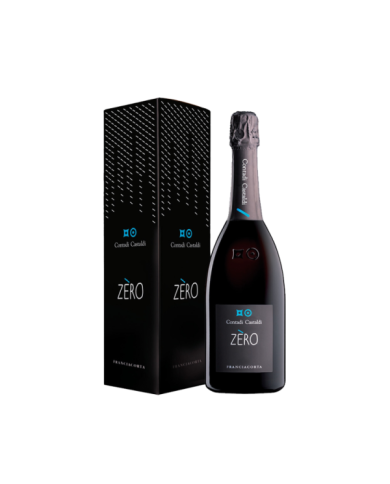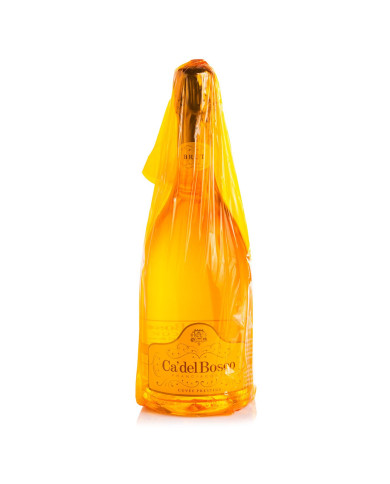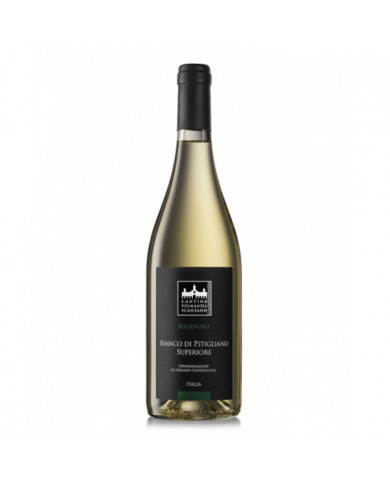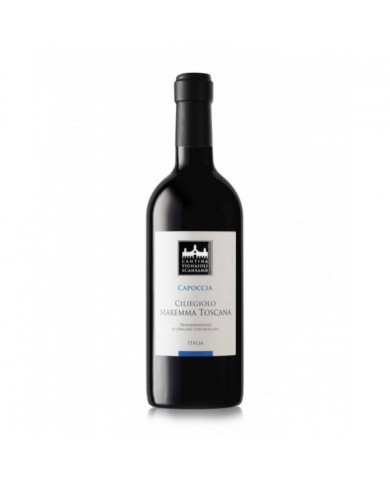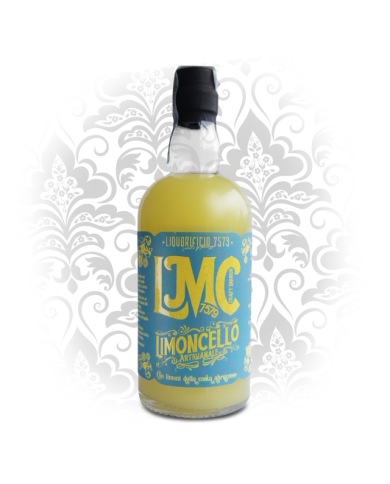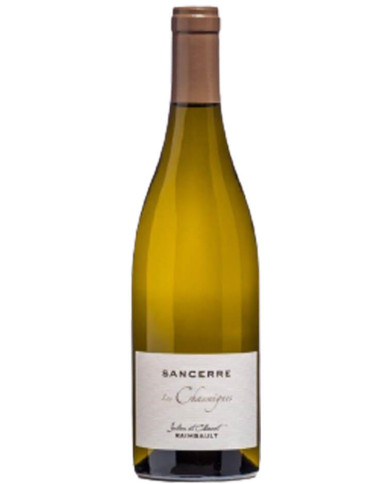Straw yellow in color, it has a balanced bouquet with notes of yeast and white flowers; on the palate it has a bubble
This Curtefranca Rosso DOC is an excellent wine to accompany first courses of land cuisine and white meats. Try it with polenta with mushroom sauce. The optimal serving temperature is 18 ┬░ C and the alcohol content reached is 13.5% Vol.
Upon visual examination it announces itself with a beautiful golden color. Pear, tropical fruit, citrus peel and a slight hint of hazelnut are embellished with a subtle spicy background, dominated by vanilla. On the palate it moves with an enveloping and tasty sip, round, with good structure, with a perfect balance between flavor and acidity. Perfect with fish main courses, cooked with important preparations, it is also to be tried with recipes based on molluscs and crustaceans. Absolutely to try with the lobster au gratin with fine herbs.
Our interpretation of this autochthonous wine enhances the freshness of the Barbera and the bouquet of the Croatina giving rise to a fresh, soft and fragrant wine, with strong territorial roots but with a modern drinkability.
The French blood of the Vistarino family can be found in the Pinot Noir clones, in the architecture of the villa and in the name of this wine which is the marriage of two primary grape varieties for sparkling wines: Pinot Noir and Chardonnay.
The Franciacorta Brut Ros├ę DOCG from the 1701 cellar is produced with Pinot Noir grapes from the "Collina" vineyard, raised according to the principles of biodynamic agriculture. The grapes of this vineyard, thanks to an excellent exposure, have a very high concentration of anthocyanins, perfect for maceration on the skins. The harvest is exclusively manual, and the grapes are selected by expert eyes and hands. After a short maceration on the skins, a first fermentation takes place on indigenous yeasts in steel tanks. This is followed by a second fermentation with a minimum stay of 30 months on the lees.
Power. A Franciacorta that expresses the strength of Pinot Noir combined with the elegance of Chardonnay and Pinot Blanc. Only a low dosage can bring out the full potential of this wine, ensuring great richness and complexity over time. A crescendo of aromas destined to surprise.
Power. A Franciacorta that expresses the strength of Pinot Noir combined with the elegance of Chardonnay and Pinot Blanc. Only a low dosage can bring out the full potential of this wine, ensuring great richness and complexity over time. A crescendo of aromas destined to surprise.
A cru of about 2 hectares, planted in 2001 with very fine Burgundian clones. On the opposite side of Pernice, at 400 m slm and facing south/south-west.
A Cru of almost 2 hectares at 400 meters above sea level, facing south/south-west, from which a wine with a complex bouquet and an enveloping body.
A Pinot Noir with a strong hint of fruit and a light and elegant woody note. A complex but very fresh red wine.
A Pinot Noir with a strong hint of fruit and a light and elegant woody note. A complex but very fresh red wine.
The heart of the history of Italian Pinot Noir. Excellent Pinot from the Pernice locality, in the Municipality of Rocca de' Giorgi, with a beautiful light ruby color and an intense bouquet.
The care and effort of an extreme production work are illuminated by golden flashes that bring with them an intriguing bouquet, full of sweetness and freshness.
Authentic wine with a peculiar character, it develops surprising qualities of taste and particular refinement.
It characterizes the territory through the grapes that compose it, an easy but great tasting approach is the surprise it arouses for its delicate vinous notes.
Sfursat di Valtellina by Aldo Rainoldi is a red wine produced with Nebbiolo grapes in the municipality of Chiuro in the province of Sondrio.
Producing quality sparkling wines is possible even in the absence of a deep-rooted tradition when production rigidity becomes a priority.
Art that bestows emotionsÔÇŽ Power, vigor, elegance, an emblematic summary of all its complexity.
It is our homage to the pleasures of life, to be grasped with lightness and simplicity. The aroma of a sweet pleasure.
Producing quality sparkling wines is possible even in the absence of a deep-rooted tradition when production rigidity becomes a priority.
For more than thirty years we have been producing this classic method sparkling wine that represents tradition and the link with the past. The expression of our family's work.
Gritty and structured, time and tranquility bring out the wonderful notes of his charisma.
A great pleasure for the palate is fully expressed in its intense bouquet of exotic fruit, a high-class wine, a true combination of refinement and elegance.
Authentic wine with a peculiar character, it develops surprising qualities of taste and particular refinement.
Although it has not been possible to call it by its real name for years, it has always maintained the intrinsic characteristics of the historic vine. The pleasant fine taste of bitter almond gives it its current name Almond.
Lively wine with pleasant notes that release freshness and intensity of fruity aromas, definitely versatile and bewitching.
Characterized by its ampelographic composition, that is to say for the vines allowed for its production, delicate pleasant almost crunchy in its pleasantness to drink.
It is an excellent wine obtained from the early harvest of Chardonnay and Pinot Nero grapes.
At the end of the natural fermentation in the bottle (36 months) we obtain an elegant wine with a fine perlage, a yellow color with golden reflections, a delicate, characteristic, fruity aroma, a savory, soft, full flavor.
Recommended with: capuns├Ęi, risotto, pumpkin tortelli, fish and shellfish, white meats and semi-aged cheeses.
3-bottle wooden box containing: wine
- _x0001_
- Sansonina Lugana DOC _x0001_
- Sansonina Red _x0001_
- Lugana Spontaneous fermentation
Love for the territory and attention to the environment are reflected both in wines with great personality and in boxes created with entirely recycled wood
ANTINORI - SPECIAL 2 BT BOX CONTENTS: 1 X CONTESSA MAGGI 2007 1 X FRANCIACORTA ROSÉ great for a gift idea!
Upon visual examination it announces itself with a beautiful golden color. Pear, tropical fruit, citrus peel and a slight hint of hazelnut are embellished with a subtle spicy background, dominated by vanilla. On the palate it moves with an enveloping and tasty sip, round, with good structure, with a perfect balance between flavor and acidity. Perfect with fish main courses, cooked with important preparations, it is also to be tried with recipes based on molluscs and crustaceans. Absolutely to try with the lobster au gratin with fine herbs.
The VINTAGE COLLECTION FRANCIACORTA DOCG DOSAGE ZÉRO NOIR CA 'DEL BOSCO 2011 ASTUCCIATO represents one of the spearheads of the renowned Ca' del Bosco company. This spectacular wine originates from Pinot Noir grapes used in purity and grown in just three sites on the ancient hills facing south of Lake Iseo. This orographic peculiarity allows them to obtain the maximum sun exposure which gives an intense structure to the grapes.
Penalty . Like the harmonic notes of a complex orchestral score, each stage of production must be performed following the times and cadences that perfection requires. Vintage Collection Dosage Z├ęro has no addition of liqueur d'exp├ędition (dosage syrup added in minimal quantity in the other Franciacortas during the degorgement phase). A pure, sincere Franciacorta, the result of the best expression of an extraordinary terroir and of the man who understood its character and potential. Intended for that public of connoisseurs who love this style. Excellent aperitif, excellent to accompany seafood and raw fish.
The Franciacorta Sat├Ęn Vintage Collection by Ca 'del Bosco is born in vineyards located between the green landscapes and the rolling hills of Erbusco, in the heart of the magical terroir of Franciacorta, the morainic cradle south of Lake Iseo. It is produced with 85% Chardonnay grapes, 15% with Pinot Bianco grapes, harvested only by hand during the first and second ten days of August. Fermentation takes place according to the classic method with refermentation in the bottle. Subsequently the wine ages on the lees for 48-52 months. The Sat├Ęn Vintage Collection is characterized by a straw yellow color. The nose opens with aromas of peach and citrus, enriched by pleasant hints of honey. On the palate it is elegant, pleasantly fresh and savory, with a delicate effervescence. Perfect to accompany appetizers, cold cuts and salami, it is ideal in combination with dishes based on fish and shellfish.
Character . Among the Franciacortas of Ca 'del Bosco it is the one that best manages to express the character of the territory and the peculiarities that celebrate each vintage. The trend of climatic phenomena always writes unpredictable stories. And in the ending is the product of the love between man and the earth. Since 1978 the Brut Millesimato is born only in quality harvests. The result of careful vinification, but above all of a long refinement that enhances its characteristics: four years of permanence in contact with the yeasts. An unmistakable, structured, full, intense and persistent Franciacorta . A wine for important occasions, special with haute cuisine fish dishes.
Character . Among the Franciacortas of Ca 'del Bosco it is the one that best manages to express the character of the territory and the peculiarities that celebrate each vintage. The trend of climatic phenomena always writes unpredictable stories. And in the ending is the product of the love between man and the earth. Since 1978 the Brut Millesimato is born only in quality harvests. The result of careful vinification, but above all of a long refinement that enhances its characteristics: four years of permanence in contact with the yeasts. An unmistakable, structured, full, intense and persistent Franciacorta . A wine for important occasions, special with haute cuisine fish dishes.
Absolute . Free from all limits, a constantly evolving value. Like the exclusive commitment necessary to create this Franciacorta dedicated to Annamaria Clementi, founder of Ca 'del Bosco and mother of Maurizio Zanella. No compromises, no concessions. Only the best of the grapes selected in the various crus are predestined for this symbolic wine. And only in the best years. Meticulous vinification and a very long refinement in the bottle that lasts for at least seven years in contact with the yeasts: this is how a great wine is created, a unicum with a magnificent golden color and very fine perlage. A perfume of extraordinary complexity, a flavor of exceptional fullness and persistence. An absolute Franciacorta.
Transition . More than a color, pink is a suspended state of mind, like a delicate transition between white and red chasing each other, without ever being either one or the other. Franciacorta Ros├ę offers a magic poised between two shades. The ros├ę color is obtained after a short maceration of the red Pinot Noir grapes. Only a few hours to get that particular shade that evokes spring sunsets: you have to seize the moment, one moment the color is too light, the next it's too dark. And then the delicate encounter with Chardonnay and a slow, patient maturation. Cuv├ęe Prestige Ros├ę, the ideal Franciacorta for the most important occasions. Especially the most romantic ones.
Identity. Virtue written in the etymology of an ancient term: idem, or being oneself. Cuv├ęe Prestige, the essence of Franciacorta in the Ca 'del Bosco style. A jewel born in 2007 from thirty years of knowledge. Only the best selections of Chardonnay, Pinot nero and Pinot bianco grapes from the best vineyards are vinified separately and wisely assembled to the reserves of the best vintages (at least 20%), in the magical rite of creating the Cuv├ęe. Only after at least 24 months of aging on the lees this wine will be able to express its richness and identity. A classic Franciacorta, balanced, pleasantly fresh and acidulous. Perfect for any occasion.
Provocation . But also revelation. The story is ironically well portrayed on the label by a wolf in lambskin. Carmen├ęre is a vine originating from the Bordeaux area, confused for a long time with Cabernet franc. Despite having organoleptic traits in common, it is a very different grape variety: much more intense and spicy. Ca 'del Bosco in 1996 entrusted the Faculty of Agriculture of the Catholic University of the Sacred Heart of Piacenza with the task of revealing its existence, origin and identity. Carmenero stands out for its very intense and dark color, for its powerful and spicy aroma, for its full, rich and original taste.
At the sight it announces itself with a dark ruby red color, impenetrable. The olfactory spectrum moves on a progression of tertiary and balsamic notes, from which even more vegetal and fruity hints emerge. On the palate it is full-bodied, round, with a sip that moves smoothly and harmoniously on the palate, highlighting a finely integrated tannic texture. Superb with second courses of red meat, it gives its best with a fillet of beef with green pepper.
This prestigious red is dedicated to Maurizio Zanella, who in the seventies founded Cà del Bosco after an enlightening trip to the Champagne region, thus giving life to a company that still today represents the excellence of enology in Italy and in the world. It is obtained from Cabernet sauvignon, Merlot and Cabernet franc grapes from the best vineyards of the company, hand-picked and selected with extreme care, the maturation is carried out in small seasoned oak barrels. It has an intense and deep ruby red color, concentrated and complex aromas of red fruits, pepper and licorice in the mouth it is soft and balanced, with a long persistence. It is a very long-lived wine, and can enrich our cellar for many years before being uncorked for a special occasion.
At sight it shows a straw yellow color. The nose opens on the fruit brought by the Chardonnay, in a whirlwind of elegant and always well-defined notes. On the palate it is medium-bodied, balanced, with a sip characterized by a fresh taste, which moves in perfect harmony with the aromas previously perceived on the nose. Try it with vegetable risotto, it is also excellent with fried zucchini and anchovies. Perfect with a fresh salmon tartare.
This Curtefranca Rosso DOC is an excellent wine to accompany first courses of land cuisine and white meats. Try it with polenta with mushroom sauce. The optimal serving temperature is 18 ┬░ C and the alcohol content reached is 13.5% Vol.
It reveals itself to the eye with a pleasant straw yellow color, limpid and clear. The perlage runs through the soul of this Franciacorta with a texture of fine and subtle bubbles, endowed with incredible persistence. On the nose there is a range of rich and layered aromas, where notes of yeast, white flowers, citrus fruits and spices are recognized. On the palate it is full-bodied, intense and pulpy, with a fresh, full and persistent taste. Refined and elegant, it requires not everyday gastronomic preparations. Excellent with a truffle risotto.
In the glass it develops with a typically golden color, crossed by a very fine and continuous perlage. The range of aromas on the nose seems to never end, and the notes that more than others are easy to recognize lead us to a world made up of pastry, citrus peel and floral essences. On the palate it is austere, rigorous, with a nice expressive rigor, enhanced by a sip that lives in the light of the relationship between freshness and flavor. It closes with a very long persistence finish. Try it with a lobster bisque.
Salmon pink color with golden reflections, with a very fine and incessant perlage, it smells of pastry, strawberries and almond sugared almonds, marzipan, aromatic herbs and notes of gunpowder. Amazing taste, balanced and enveloping, silky and moderately savory, with decisive acid support and very long persistence. With white fish and raw and steamed crustaceans, with a steak of tuna with sesame, with pork loin in crust, with semi-aged cheeses and with diced pistachio mortadella.
A Franciacorta that needs no introduction. Produced for the first time in 2007, this wine is born from the assembly of Chardonnay, Pinot Nero and Pinot Bianco grapes vinified separately and then added to the Reserves of the best vintages, which combined wisely give rise to this prestigious Cuv├ęe. FRANCIACORTA CA 'DEL BOSCO
At sight it announces itself with a dark, impenetrable ruby red color. The olfactory spectrum moves on a progression of tertiary and balsamic notes, from which even more vegetal and fruity hints emerge. On the palate it is full-bodied, round, with a sip that moves smoothly and harmoniously on the palate, highlighting a finely integrated tannic texture. Superb with second courses of red meat, it gives its best with a fillet of beef with green pepper.
The Dosage Zero by Ca 'del Bosco is a pure and elegant Franciacorta, the result of the best expression of an extraordinary terroir and of the man who understood its character and potential. The man who made the production of the great wines of the Ca 'del Bosco winery possible is Maurizio Zanella, who, after a trip to Champagne in the late seventies, decides to follow his mother Annamaria Clementi and moves into her home and Erbusco is precisely here that he is absorbed by the passion for wine and plants the first rows in sylvoz, transforming the surrounding hill into a vineyard of excellence over time. A Franciacorta that is a guarantee of absolute quality.
Fruit of all the attention and care that distinguish the production of Bellavista , Franciacorta Ros├ę is born from an assembly of the best grapes of pinot noir and chardonnay, a sparkling wine where the structure of the first meets the grace of the second. The essence of pinot noir not only gives color an important role of tonality and stability, but also becomes the elusive, delicate and constant taste-olfactory trait that makes a graceful masterpiece of nature distinctive. An extraordinary Franciacorta, whose permanence in the cellar is at least 5 years.
The Gran Cuv├ęe millesimato of Bellavista differs from the traditional Bruts not only for the quality of the raw material that is used but also and above all for the fact that over a quarter of the wines from which it is made matures for seven months in small oak barrels. Bellavista 's Franciacorta DOCG Brut is in fact a magnificent Franciacorta for stature and balance, the result of a not abundant vintage but of excellent quality. A mythical sparkling wine.
The result of a rigorous selection in the vineyard, Bellavista 's ÔÇťGran Cuv├ęeÔÇŁ Sat├Ęn is produced in very limited quantities. It is in fact the first Italian experience in the creation of a great Franciacorta designed thanks to the ancient technology of "small barrels" with the aim of enhancing and interpreting, through a style that can be defined as "feminine", the chardonnay from the best Bellavista vineyards. The result is a velvety and enthralling sparkling wine, a true paradigm among the Sat├Ęn of Franciacorta.
The Franciacorta for those who do not like compromises, the Dosaggio Zero is certainly the most vertical, direct, lashing one. A sparkling wine with a great personality, made up of a selection of Pinot Noir from a specific morainic soil that gives the grapes the characteristic savory notes that we find in the glass. Inevitable.
The Franciacorta Pas Oper├ę by Bellavista is a full-bodied and intense classic method sparkling wine, not dosed, coming from historical vineyards and aged on the lees in the bottle for 72 months. Aromatic hints of ripe yellow fruit and citrus jam enrich a fresh, toasted and mineral taste, with character and personality
CUV├ëE PRESTIGE Identity. A virtue that is found in the etymology of an ancient word: idem, or to be the same. Cuv├ęe Prestige, the essence of Franciacorta, in the Ca 'del Bosco style. A jewel born in 2007 from thirty years of experience. Only the best Chardonnay (75%), Pinot Nero (15%) and Pinot Bianco (10%) grapes from 134 vineyards, vinified separately and wisely blended with reserves of the most beautiful vintages (at least 20%) enter the magical rite of Cuv├ęe Creation . It will take 28 months of aging on the lees before this wine is ready to express all its richness and identity. A classic Franciacorta, balanced, pleasantly fresh and crunchy. Perfect for any occasion.
Discover the delicious secrets of Lombardy wines
Wines from Lombardy? If you're a wine enthusiast, chances are you've heard of this Italian region. Lombardy is one of the largest regions of the Italian peninsula and one of the main producers of wines. It is a region with a large variety of wines, from whites to reds, which can satisfy everyone's taste.
In this article, we'll explore some of Lombardy's most delicious wines, from the best-known to the lesser-known wines, and discover the secrets they hide. Let's find out together what the wines of Lombardy are and what are their most interesting characteristics.
Lombard wines
Lombardy is a wine-rich region, with a large variety of wines produced from around 5,000 vineyards. The best known and most appreciated wines are Franciacorta and Valtellina Superiore, two great white wines, but Lombardy also offers a wide range of red wines, such as Valtellina Superiore, Nebbiolo, Barbera, and Pinot Noir.
The wines of Lombardy have a unique and unique taste profile, with fruit aromas, spicy notes, good structure and considerable complexity. The wines produced in this region also have a characteristic mineral flavour, a consequence of the volcanic soils of the area.
Franciacorta
Franciacorta is one of the most appreciated wines of Lombardy. It is a sparkling white wine produced with the Chardonnay, Pinot Nero and Pinot Bianco grape varieties, grown in the hills of Franciacorta.
Franciacorta wines are characterized by an intense straw yellow colour, a fruity aroma of apple, pear, apricot and citrus fruits, and a harmonious flavor with notes of apple, pear, apricot, honey and spicy notes.
The Upper Valtellina
Valtellina Superiore is another highly appreciated wine from Lombardy. It is an intense red produced with the Nebbiolo vine variety and grown in the Valtellina, a mountainous region of Lombardy.
Valtellina Superiore wines are characterized by an intense bouquet of berries, cherries and spices, and a velvety flavor with notes of berries, cherries, chocolate, tobacco and vanilla.
The Pinot Noir
Pinot Noir is another popular red wine from Lombardy. It is a wine with an intense ruby red color, produced with the Pinot Nero vine variety and cultivated in the Lake Como area.
Pinot Noir wines from Lombardy are characterized by an intense bouquet of berries, cherries, spices and a complex flavor with notes of berries, cherries, chocolate, tobacco and vanilla.
What makes the wines of Lombardy special?
The wines of Lombardy are special for a variety of reasons. First, they are made with unique vine varieties, such as Nebbiolo, Pinot Noir and Chardonnay. Furthermore, they are produced in a region rich in history and tradition, with volcanic soil and a mild climate that create ideal conditions for the production of quality wines.
Furthermore, Lombardy is one of the main Italian regions for the production of wines, with around 5,000 vineyards producing quality wines. These vineyards produce high-level wines, with intense aromas, great complexity and great persistence.
How to enjoy the wines of Lombardy?
There are many ways to enjoy the wines of Lombardy. An easy way is to sample the wines on a visit to the region, where you can visit some of the best wineries in the area.
Furthermore, it is possible to taste the wines of Lombardy in a local restaurant, where you can choose from a wide selection of local wines. Furthermore, it is possible to buy the wines of Lombardy in specialized shops or online.
Appellation Wines of Lombardy: A Complete Guide
Lombardy is one of the most important regions of Italy for the production of wine. Thanks to its geographical position and its diversity of soils, this region has been able to produce some of the best Italian wines. In this article, we will provide you with a complete guide to the appellation of wines in Lombardy, explaining the main wine areas and the most important wines.
The denomination of the wines of Lombardy
The appellation of the wines of Lombardy is divided into four main categories:
DOC
The Denomination of Controlled Origin (DOC) indicates a specific wine area and a series of rules that must be followed in the production of wine. Some examples of DOC wines from Lombardy include Franciacorta, Garda Classico and Valcalepio.
DOCG
The Denomination of Controlled and Guaranteed Origin (DOCG) is a higher quality denomination than the DOC. The DOCG wines of Lombardy include Valtellina Superiore, Franciacorta Sat├Ęn and Moscato di Scanzo.
IGT extension
The Indicazione Geografica Tipica (IGT) is a more generic denomination than the DOC and DOCG. The IGT wines of Lombardy include Terre Lariane, Ronchi Varesini and Rubino di Cantavenna.
Table wine
Vino da Tavola is the simplest and least restrictive denomination. However, there are still some rules that must be followed when making wine. The table wine of Lombardy includes the Rosso di Valtellina and the Bianco di Custoza.
The wine areas of Lombardy
Lombardy is divided into several wine areas, each of which produces unique and distinctive wines.
Valtellina
The Valtellina wine area is located in the northern part of Lombardy, near the border with Switzerland. This area is famous for the production of Valtellina Superiore, a red wine with an intense and full-bodied flavour.
Franciacorta
The Franciacorta wine area is located in the central part of Lombardy, near Lake Iseo. This area is famous for the production of Franciacorta, a classic method sparkling wine similar to Champagne.
Garda Classic
The Garda Classico wine area is located in the eastern part of Lombardy, near Lake Garda. This area is famous for the production of Garda Classico, a dry and fresh white wine.
Beyond Pavese
The Oltrep├▓ Pavese wine area is located in the southern part of Lombardy. This area is famous for the production of wines such as the Bonarda dell'Oltrep├▓ Pavese, a light and fruity red wine.
In conclusion, the wines of Lombardy are among the best in Italy, thanks to the combination of favorable climate, geographical position and diverse soils. With its great variety of DOC, DOCG, IGT and table wines, Lombardy offers a vast choice of wines to satisfy every taste.
What are the main DOC wines of Lombardy?
Some of the major DOC wines of Lombardy include Franciacorta, Garda Classico and Valcalepio.
What are the main DOCG wines of Lombardy?
The main DOCG wines of Lombardy include Valtellina Superiore, Franciacorta Sat├Ęn and Moscato di Scanzo.
What are the main IGT wines of Lombardy?
The main IGT wines of Lombardy include Terre Lariane, Ronchi Varesini and Rubino di Cantavenna.
What are the wine areas of Lombardy?
The main wine areas of Lombardy include Valtellina, Franciacorta, Garda Classico and Oltrep├▓ Pavese.
What are the most famous wines of Lombardy?
Some of Lombardy's most famous wines include Franciacorta, Valtellina Superiore, and Moscato di Scanzo.
Which are the main wine cellars of Lombardy?
There are many famous wine cellars in the Lombardy region. Here are some of the main wineries in Lombardy:
Ca' del Bosco : located in the Franciacorta area, it is one of the most famous wineries in the region. Here the famous Franciacorta is produced, a classic method sparkling wine similar to Champagne.
Nino Negri : located in the Valtellina area, it is one of the oldest and most respected wineries in the region. Here Valtellina Superiore is produced, a red wine with an intense and full-bodied flavour.
Bellavista : located in the Franciacorta area, it is a famous winery for the production of high quality sparkling wines. Their Franciacorta Sat├Ęn is particularly appreciated.
Mamete Prevostini : located in the Valtellina area, this winery produces some of the best wines of the region, including the famous Sforzato di Valtellina.
Castello di Cigognola : located in the Oltrep├▓ Pavese area, this winery is famous for the production of wines such as Bonarda dell'Oltrep├▓ Pavese and Pinot Noir.
These are just some of the most famous wineries in Lombardy, but there are many others that produce high quality wines and are well worth a visit.

